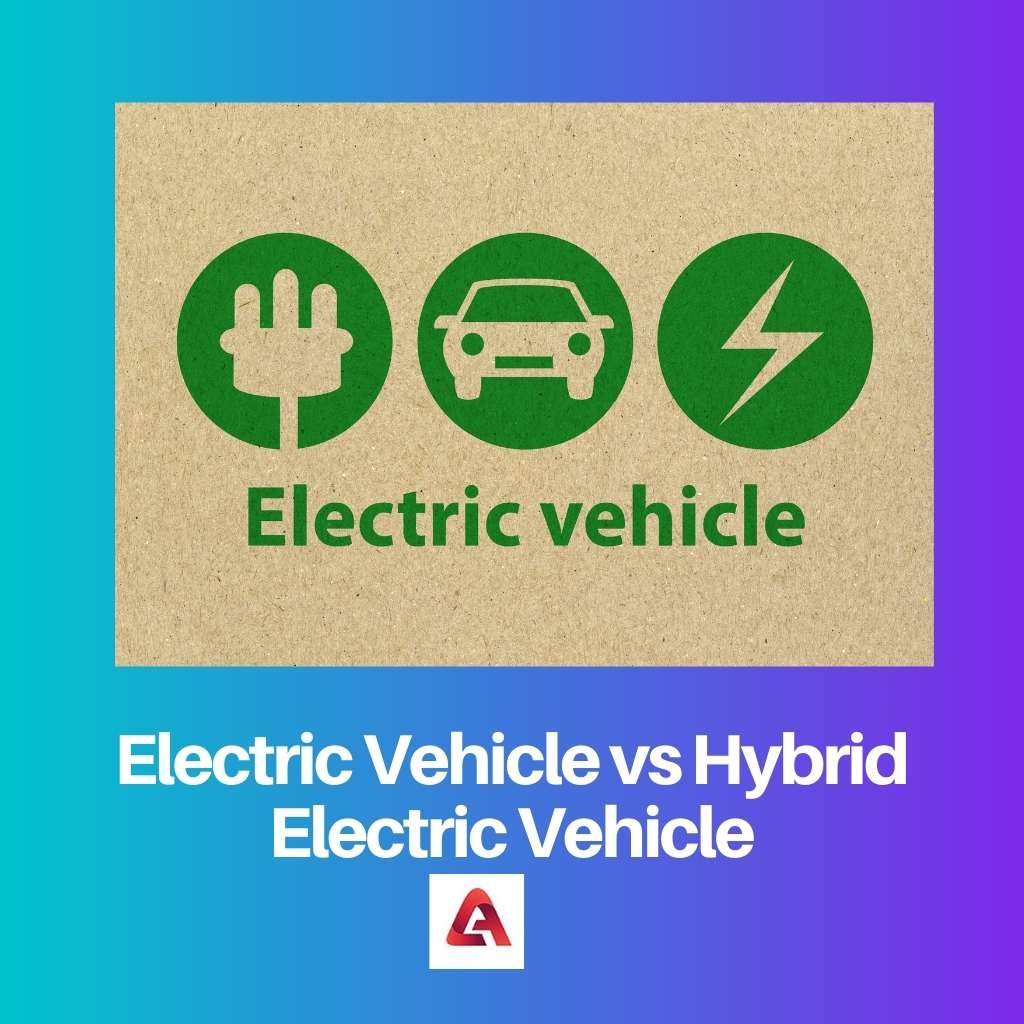Electric vehicles and hybrid electric vehicles look similar, but they work on two different concepts. You need to know the differences and similarities between an electric vehicle and a hybrid electric vehicle before buying them from the stores or online.
Key Takeaways
- EVs are powered solely by electric motors and batteries, while HEVs have both electric and internal combustion engines.
- EVs produce zero tailpipe emissions, whereas HEVs produce fewer emissions than conventional vehicles but still generate some pollutants.
- HEVs have a longer range than EVs due to their dual power sources, but EVs are more environmentally friendly overall.
Electric Vehicle vs Hybrid Electric Vehicle
An electric vehicle uses only one or more electric motors that draw electricity from a battery to run and can be charged from an external source. A hybrid electric vehicle uses both an internal combustion engine (ICE) and one or more electric motors each with their own separate batteries to run.

The electric vehicle is also called EV in short form. Electric vehicles are nothing but fully charged electric vehicles which use electricity as a primary source for running the motors. Electric vehicles are environment-friendly vehicles.
They are comes under Zero-Emission Vehicles(ZEV). They have very less maintenance parts when compared to normal vehicles running on fuel like petrol and diesel.
Electric vehicles use electric motors with batteries made of lead-acid or metal hydrate. The standard batteries are made of lithium ions.
Hybrid electric vehicles are different from electric vehicles. but both have similarities. The hybrid electric car work on the methodology where it uses the combination of electricity and combustion fuel.
The combustion fuel is nothing but petrol and diesel. Hybrid-electric vehicles give better mileage when compared to electric vehicles.
They have come under the Low Emission Vehicles(LEV) category. The hybrid vehicles use two engines namely electric motors and steam engines.
Comparison Table
| Parameters of comparison | Electric Vehicle | Hybrid Electric Vehicle |
|---|---|---|
| Types | The electric vehicle has three types | A hybrid electric vehicle has five types |
| Power source | Electric vehicles use electricity | Hybrid electric vehicles use electricity and conventional fuel |
| Engine | Electric vehicles have EC | The hybrid electric vehicle has ICE and EC |
| Fuel efficiency | Electric vehicles depend on battery capacity | The hybrid-electric vehicles depend on ICE and battery range |
| Emissions | Low in an electric vehicle | High in hybrid electric vehicle |
What is Electric Vehicle?
Electric vehicles run on batteries. The lithium-ion battery used in electric vehicles has greater longevity and energy-reducing power. It makes self discharge of up to 5 percent in a month.
The improved efficiency of batteries attracts more people to buy electric vehicles. It also has several disadvantages like fire explosions due to the excessive heat of batteries.
Electric vehicles have three types. They are pure electric cars, plug-in hybrid electric cars, and range-extended electric cars. The pure electric vehicle is completely propelled by electric motors.
Plug-in hybrid electric vehicles have two options namely rechargeable battery and internal electricity maintenance device which is charged at the charge station.
Range-extended electric vehicles are vehicles with big batteries. These vehicles give extra mileage since it has extended batteries.
The advantages of electric vehicles are they create little noise pollution, No need for sparks, and plugs. It doesn’t cause air pollution. It has rechargeable batteries.
Electric vehicles take 30 minutes to 12 hours for charging their battery. Anyos Jedlik built is the one who invented the first crude but viable electric motor. Among electric vehicles, electric trains are more popular.

What is a Hybrid Electric Vehicle?
The hybrid-electric vehicles use two engines, and both of them spin the wheels. Hybrid vehicles use less amount of combustion fuel. When compared to a normal vehicle, hybrid electric vehicles provide better fuel efficiency and low emissions.
While braking or cruising, the hybrid electric vehicle undergoes heavy work so it uses more fuel which results in a higher fuel efficiency range.
The electric motors stores electricity which helps the vehicle to move from one place to another using electrical energy.
Electricity is the primary source of a hybrid electric vehicle, but in the case of the absence of electricity, the combustion fuel becomes the primary source of a hybrid electric vehicle. The energy is stored in the batteries.
The work of an electric motor is to draw the energy from the batteries and put it into wheels for its spinning process. Toyota Prius, Ford Fusion Hybrid, Toyota Camry, Honda Accord, Hyundai Ioniq are some examples of hybrid electric vehicles.
Hybrid electric vehicles are divided into five types. They are parallel hybrid, series hybrid, two-mode hybrid, plug-in hybrid, and mild hybrid.
The parallel hybrid type is most popular among others. In parallel type, both the power sources are parallelly connected to the wheels. In Series mode, any one of the sources is used at a time.
In plug-in type, large batteries are inserted with electric motors. In the two-mode type, the vehicles work on two different modes. On the first mode, it works normal hybrid vehicle. In the second mode, it takes and does special tasks.

Main Differences Between Electric Vehicle and Hybrid Electric Vehicle
- Electric vehicles need to be charged every time after use, but hybrid electric vehicles need not be charged.
- Electric vehicles have electric motors, whereas hybrid electric vehicles have internal combustion engines and electric motors.
- Electric vehicles come under Zero-Emission Vehicles(ZEV), whereas hybrid electric vehicles come under Low Emission Vehicles(LEV).
- Electric vehicles have three different types, whereas hybrid electric vehicles ha five different types.
- When compared to an electric vehicle, hybrid electric vehicles give more mileage.

- https://ieeexplore.ieee.org/abstract/document/989873/
- https://books.google.com/books?hl=en&lr=&id=suMSEAAAQBAJ&oi=fnd&pg=PP1&dq=electric+versus+hybrid+vehicles&ots=39dLwzNY4B&sig=eTOByQzy4wrAr8ceiN9kqb-fFOk
